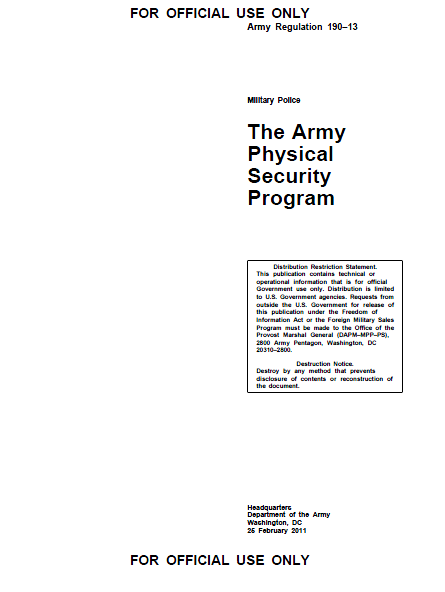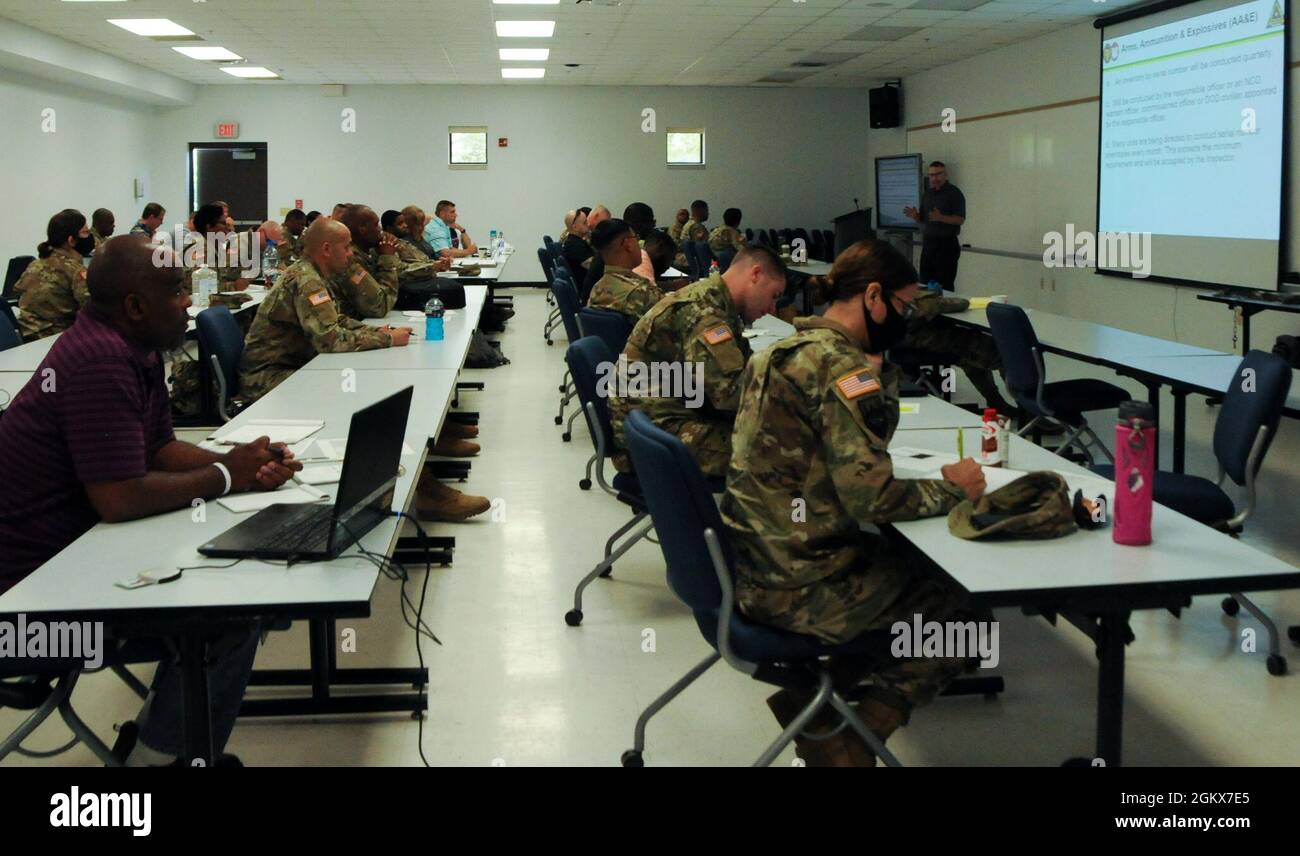Army Regulation Physical Security
Army Regulation Physical Security: Ensuring Safety and Protection
The Army Physical Security Program is a comprehensive set of regulations designed to ensure the safety and protection of Army personnel, facilities, and resources. By implementing strict protocols and guidelines, this program plays a crucial role in maintaining security and minimizing potential threats. In this article, we will delve into the key aspects of the Army Regulation Physical Security and the importance it holds in safeguarding our military assets.
1. Understanding the Basics of Army Regulation Physical Security
When it comes to physical security, the Army follows a structured approach to prevent unauthorized access, deter intruders, and protect valuable assets. The key components of this regulation include:

Image: Army APFT Regulation Poster
1. Physical Security Planning: This stage involves assessing risks, developing security plans, and identifying essential assets that require protection.
2. Security Measures: Implementing a combination of physical barriers, surveillance systems, alarm systems, and access control measures to deter and detect unauthorized access.
3. Security Training: Providing specialized training to Army personnel responsible for maintaining physical security, such as security guards or installation managers.
4. Inspections and Assessments: Conducting regular inspections to identify vulnerabilities, assess the effectiveness of security measures, and make necessary improvements.
2. Promoting Safety through Physical Security Measures
The Army Regulation Physical Security lays down specific measures to ensure safety and protection. Some of these measures include:

Image: The Army Physical Security Program Book
2.1 Perimeter Security
In order to establish a secure perimeter, the Army utilizes a combination of physical barriers, such as fences, walls, or gates, along with surveillance systems and alarm systems. This acts as the first line of defense and prevents unauthorized access to Army installations.
2.2 Access Control
Access control is a vital component of physical security. By implementing measures such as identification badges, key cards, or biometric systems, the Army ensures that only authorized individuals can gain entry to restricted areas.
2.3 Surveillance Systems
Surveillance systems, including CCTV cameras, motion sensors, and alarm systems, play a crucial role in detecting and deterring potential threats. These systems are monitored by trained personnel who can quickly respond to any suspicious activities.
These physical security measures, along with many others outlined in the Army Regulation, are designed to create layers of protection and prevent unauthorized access to Army facilities and resources. By implementing these measures, the Army can maintain a safe and secure environment for its personnel.
3. Frequently Asked Questions (FAQs)
Here are some common questions related to the Army Regulation Physical Security:
3.1 Why is physical security important for the Army?
Physical security is of utmost importance for the Army as it ensures the safety of personnel, facilities, and critical resources. It helps deter threats, prevent unauthorized access, and maintain the integrity of Army installations.
3.2 Who is responsible for implementing physical security measures?
Implementing physical security measures is a collective responsibility. However, specific personnel, such as security managers and installation managers, are primarily responsible for planning, implementing, and maintaining physical security protocols.
3.3 What are the consequences of non-compliance with physical security regulations?
Non-compliance with physical security regulations can have serious consequences, including compromising the safety of personnel and assets, potential breaches of sensitive information, and damage to the reputation of the Army.
By adhering to the Army Regulation Physical Security, the Army demonstrates its commitment to safeguarding its assets and ensuring the well-being of its personnel. This comprehensive regulation serves as a blueprint for creating a secure environment and mitigating potential risks. Through careful planning, continuous training, and implementation of stringent security measures, the Army remains prepared to face any challenge that might arise.
Conclusion
The Army Regulation Physical Security is a vital component of the Army's overall security strategy. By implementing the guidelines and protocols outlined in this regulation, the Army can effectively protect its personnel, facilities, and resources from potential threats. From planning and risk assessment to physical barriers and surveillance systems, every aspect of physical security is carefully considered and implemented to create a safe and secure environment.
As the Army continues to adapt to evolving security threats, the Army Regulation Physical Security will play a crucial role in ensuring the preparedness and resilience of our military installations. By adhering to these regulations, the Army sends a strong message that it prioritizes the safety and protection of its personnel and assets.
Disclaimer: The information provided in this article is based on publicly available data and does not reflect the views or opinions of any AI or machine learning system.
(U//FOUO) U.S. Army Regulation 190–13 Physical Security Program
 Image Source : publicintelligence.net
Image Source : publicintelligence.net 190 army physical security regulation usarmy fouo program publicintelligence
Army Physical Fitness Test Regulation At Armytimes
 Image Source : militaryhousing.info
Image Source : militaryhousing.info DVIDS - Images - Army Reserve Command Boosts Readiness Through Physical
 Image Source : www.dvidshub.net
Image Source : www.dvidshub.net The Army Physical Security Program (Army Regulations Series
 Image Source : www.amazon.com
Image Source : www.amazon.com army physical security flip amazon front back
Us Army Physical Security Program
 Image Source : studylib.net
Image Source : studylib.net physical security army program plan
Army APFT Regulation: Physical Fitness Army Regulation
 Image Source : www.part-time-commander.com
Image Source : www.part-time-commander.com Military Police: The Army Physical Security Program (Army Regulation
security physical police military army program flip amazon front back
Army Physical Readiness Division Hi-res Stock Photography And Images
 Image Source : www.alamy.com
Image Source : www.alamy.com The army physical security program (army regulations series. Us army physical security program. Military police: the army physical security program (army regulation. (u//fouo) u.s. army regulation 190–13 physical security program. Army apft regulation: physical fitness army regulation